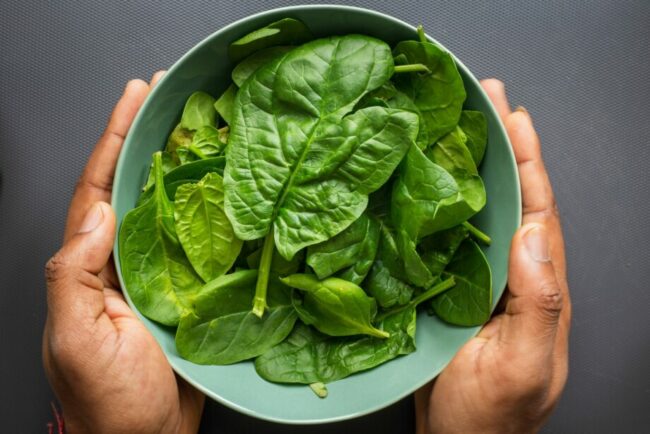Buying healthful greens like spinach is straightforward, yet consuming them before they go bad can be a challenge. If you’ve ever discovered a neglected bag of spinach in your refrigerator and wondered whether it’s still good to eat, you’re not alone. This article offers comprehensive insights into the storage, shelf life, and signs of spoilage of spinach.
The Shelf Life of Spinach
Spinach, akin to its leafy counterparts, possesses a relatively short shelf life. Fresh spinach acquired from farmers’ markets retains its quality for approximately two weeks under optimal conditions. Pre-packaged variants come with an expiration date, which is a reliable indicator of their longevity. However, with ideal storage, you might be able to extend its life for an additional 3 to 5 days. Consuming spinach when it’s fresh is crucial as it loses its nutritional value over time. For instance, a seven-day-old spinach pack won’t be as nutritionally potent as it was initially.

Storing Cooked Spinach
Once cooked, spinach demands immediate consumption, ideally within 3-4 hours, to maintain its freshness and prevent degradation. Storing it in a refrigerator can prolong its edibility. In a refrigerated state, cooked spinach can last for 3 to 5 days if kept in an airtight container. This approach prevents it from turning sticky and spoiling prematurely.
Fresh Spinach in the Refrigerator
Fresh, unopened spinach can last up to two weeks in the refrigerator. If you’ve already opened the package, the lifespan shortens to just over a week. To maximize its shelf life, transfer the spinach to a sealable plastic bag or an airtight container.
Freezing Spinach
Surprisingly, given its delicate nature, spinach fares well when frozen, lasting up to a year if properly stored. Quick freezing and appropriate storage are vital to preserving its nutritional content and taste. You might also consider purchasing pre-frozen spinach, which can sometimes offer superior nutritional value compared to fresh variants due to swift processing post-harvest.
Signs of Spoilage
Spoiled spinach exhibits distinct signs, such as mold, sliminess, yellowing, and wilting of leaves. While a few yellow or wilted leaves might not warrant disposal of the entire bunch, extensive yellowing does. It’s ultimately a matter of personal judgment and when in doubt, it’s safer to discard the questionable spinach.
Selecting Fresh Spinach
When purchasing, opt for spinach with bright, crisp leaves and avoid those with discolored stems. Be cautious with pre-packaged options; excessive condensation inside the packaging can accelerate spoilage.
Washing Considerations
Despite some products being labeled as pre-washed, a thorough rinse before use is advisable to mitigate the risk of consuming contaminants. Refrain from washing spinach prior to storage as this can induce bruising and expedite spoilage due to moisture retention.
Storage Techniques
Proper storage is crucial for spinach longevity. For fresh spinach, refrigeration below 40 degrees Fahrenheit in a dry state is optimal. If pre-packaged, retain the original packaging until usage as it contains preservative gases. When storing, use airtight containers or heavy-duty plastic bags, and avoid storing spinach near ethylene-emitting fruits like apples and bananas.
Freezing Procedures
Freezing is an effective long-term storage method for spinach. Preparation, like blanching, is essential for preserving spinach’s nutritional content and color during freezing. Once prepared, spinach should be stored in airtight containers or heavy-duty freezer bags to prevent freezer burn.
Conclusion
Understanding the perishable nature of spinach, its shelf life, and proper storage techniques can aid in preventing premature spoilage, ensuring that you can enjoy this nutritious leafy green at its best. Adopting these practices will not only save money but also ensure that you consume spinach that is fresh and safe.

Editorial Staff
Our writers, editors, content managers, and SEO specialist. We all take part in crafting amazing articles. We spend hours ensuring that each article is based on facts, researched, and thorough. You'll never want to click the back button to look for more answers other than here!
